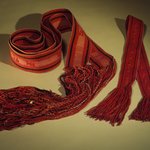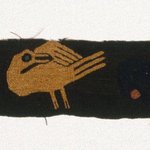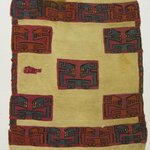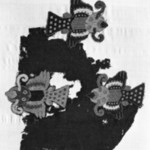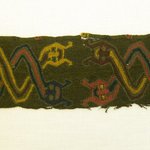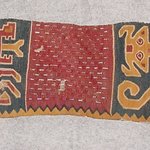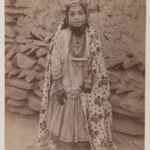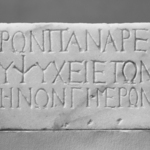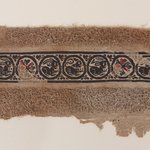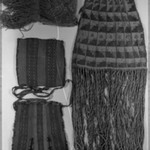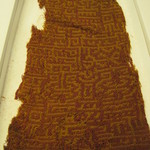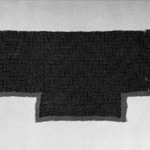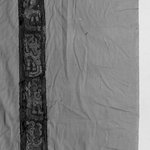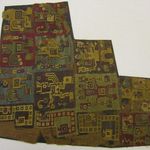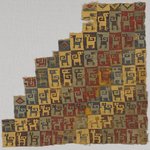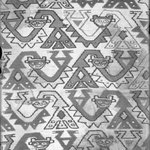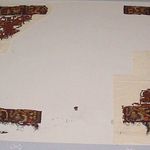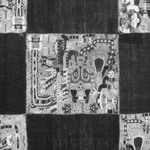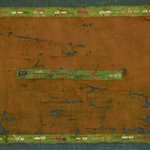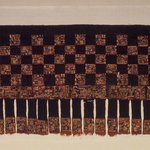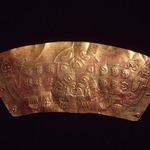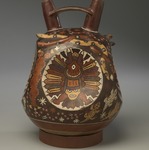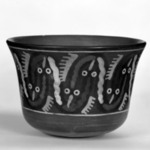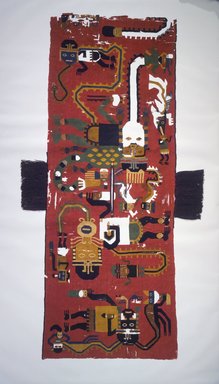

Nasca. Poncho or Tunic, 100–200 C.E. Camelid fiber, 74 7/16 x 27 9/16 in. (189.1 x 70 cm). Brooklyn Museum, Alfred W. Jenkins Fund, 34.1579 (Photo: Brooklyn Museum, 34.1579_front.jpg)

Nasca. Poncho or Tunic, 100–200 C.E. Camelid fiber, 74 7/16 x 27 9/16 in. (189.1 x 70 cm). Brooklyn Museum, Alfred W. Jenkins Fund, 34.1579 (Photo: Brooklyn Museum, 34.1579_at_PS11.jpg)

Nasca. Poncho or Tunic, 100–200 C.E. Camelid fiber, 74 7/16 x 27 9/16 in. (189.1 x 70 cm). Brooklyn Museum, Alfred W. Jenkins Fund, 34.1579 (Photo: Brooklyn Museum, 34.1579_at_detail01_PS11.jpg)

Nasca. Poncho or Tunic, 100–200 C.E. Camelid fiber, 74 7/16 x 27 9/16 in. (189.1 x 70 cm). Brooklyn Museum, Alfred W. Jenkins Fund, 34.1579 (Photo: Brooklyn Museum, 34.1579_at_detail02_PS11.jpg)
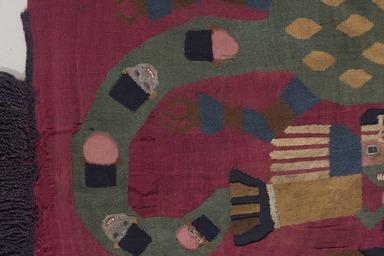
Nasca. Poncho or Tunic, 100–200 C.E. Camelid fiber, 74 7/16 x 27 9/16 in. (189.1 x 70 cm). Brooklyn Museum, Alfred W. Jenkins Fund, 34.1579 (Photo: Brooklyn Museum, 34.1579_at_detail03_PS11.jpg)
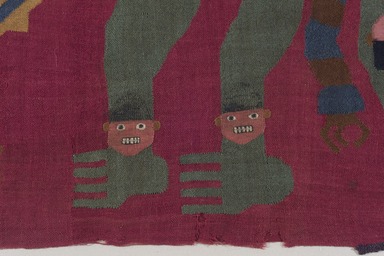
Nasca. Poncho or Tunic, 100–200 C.E. Camelid fiber, 74 7/16 x 27 9/16 in. (189.1 x 70 cm). Brooklyn Museum, Alfred W. Jenkins Fund, 34.1579 (Photo: Brooklyn Museum, 34.1579_at_detail04_PS11.jpg)
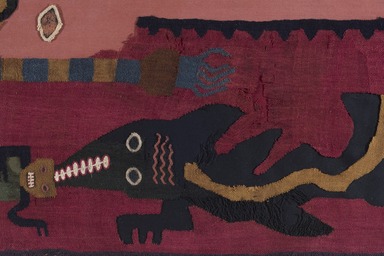
Nasca. Poncho or Tunic, 100–200 C.E. Camelid fiber, 74 7/16 x 27 9/16 in. (189.1 x 70 cm). Brooklyn Museum, Alfred W. Jenkins Fund, 34.1579 (Photo: Brooklyn Museum, 34.1579_at_detail05_PS11.jpg)

Nasca. Poncho or Tunic, 100–200 C.E. Camelid fiber, 74 7/16 x 27 9/16 in. (189.1 x 70 cm). Brooklyn Museum, Alfred W. Jenkins Fund, 34.1579 (Photo: Brooklyn Museum, 34.1579_at_detail06_PS11.jpg)

Nasca. Poncho or Tunic, 100–200 C.E. Camelid fiber, 74 7/16 x 27 9/16 in. (189.1 x 70 cm). Brooklyn Museum, Alfred W. Jenkins Fund, 34.1579 (Photo: Brooklyn Museum, 34.1579_at_detail07_PS11.jpg)
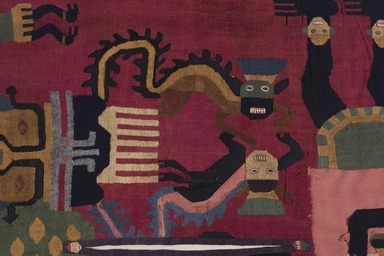
Nasca. Poncho or Tunic, 100–200 C.E. Camelid fiber, 74 7/16 x 27 9/16 in. (189.1 x 70 cm). Brooklyn Museum, Alfred W. Jenkins Fund, 34.1579 (Photo: Brooklyn Museum, 34.1579_at_detail08_PS11.jpg)
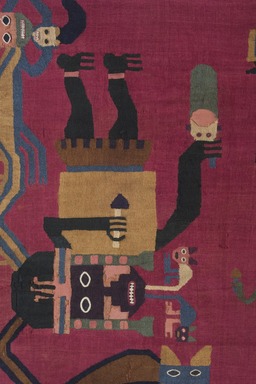
Nasca. Poncho or Tunic, 100–200 C.E. Camelid fiber, 74 7/16 x 27 9/16 in. (189.1 x 70 cm). Brooklyn Museum, Alfred W. Jenkins Fund, 34.1579 (Photo: Brooklyn Museum, 34.1579_at_detail09_PS11.jpg)
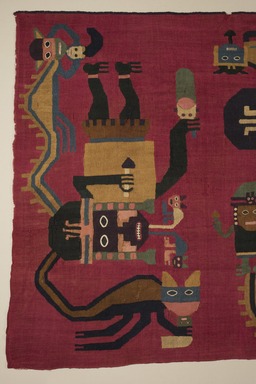
Nasca. Poncho or Tunic, 100–200 C.E. Camelid fiber, 74 7/16 x 27 9/16 in. (189.1 x 70 cm). Brooklyn Museum, Alfred W. Jenkins Fund, 34.1579 (Photo: Brooklyn Museum, 34.1579_dt_detail01_PS11.jpg)
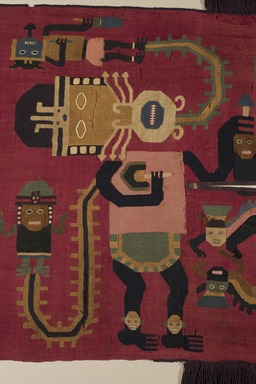
Nasca. Poncho or Tunic, 100–200 C.E. Camelid fiber, 74 7/16 x 27 9/16 in. (189.1 x 70 cm). Brooklyn Museum, Alfred W. Jenkins Fund, 34.1579 (Photo: Brooklyn Museum, 34.1579_dt_detail02_PS11.jpg)
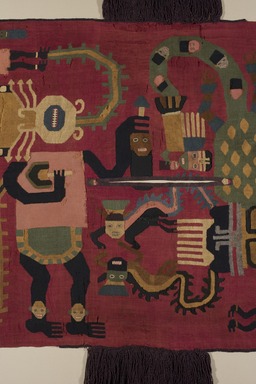
Nasca. Poncho or Tunic, 100–200 C.E. Camelid fiber, 74 7/16 x 27 9/16 in. (189.1 x 70 cm). Brooklyn Museum, Alfred W. Jenkins Fund, 34.1579 (Photo: Brooklyn Museum, 34.1579_dt_detail03_PS11.jpg)
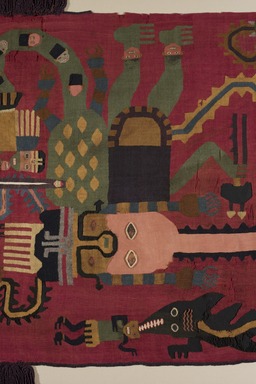
Nasca. Poncho or Tunic, 100–200 C.E. Camelid fiber, 74 7/16 x 27 9/16 in. (189.1 x 70 cm). Brooklyn Museum, Alfred W. Jenkins Fund, 34.1579 (Photo: Brooklyn Museum, 34.1579_dt_detail04_PS11.jpg)

Nasca. Poncho or Tunic, 100–200 C.E. Camelid fiber, 74 7/16 x 27 9/16 in. (189.1 x 70 cm). Brooklyn Museum, Alfred W. Jenkins Fund, 34.1579 (Photo: Brooklyn Museum, 34.1579_dt_detail05_PS11.jpg)

Nasca. Poncho or Tunic, 100–200 C.E. Camelid fiber, 74 7/16 x 27 9/16 in. (189.1 x 70 cm). Brooklyn Museum, Alfred W. Jenkins Fund, 34.1579 (Photo: Brooklyn Museum, 34.1579_dt_detail06_PS11.jpg)
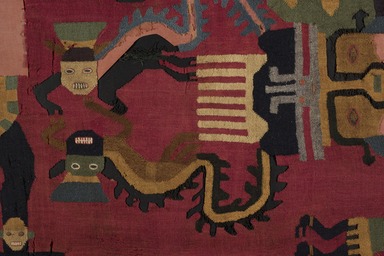
Nasca. Poncho or Tunic, 100–200 C.E. Camelid fiber, 74 7/16 x 27 9/16 in. (189.1 x 70 cm). Brooklyn Museum, Alfred W. Jenkins Fund, 34.1579 (Photo: Brooklyn Museum, 34.1579_dt_detail07_PS11.jpg)

Nasca. Poncho or Tunic, 100–200 C.E. Camelid fiber, 74 7/16 x 27 9/16 in. (189.1 x 70 cm). Brooklyn Museum, Alfred W. Jenkins Fund, 34.1579 (Photo: Brooklyn Museum, 34.1579_dt_detail08_PS11.jpg)
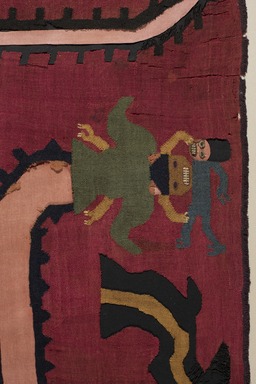
Nasca. Poncho or Tunic, 100–200 C.E. Camelid fiber, 74 7/16 x 27 9/16 in. (189.1 x 70 cm). Brooklyn Museum, Alfred W. Jenkins Fund, 34.1579 (Photo: Brooklyn Museum, 34.1579_dt_detail09_PS11.jpg)
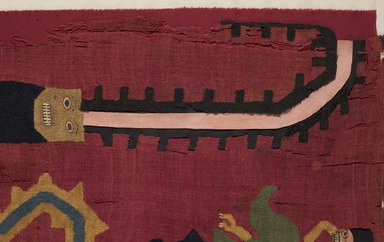
Nasca. Poncho or Tunic, 100–200 C.E. Camelid fiber, 74 7/16 x 27 9/16 in. (189.1 x 70 cm). Brooklyn Museum, Alfred W. Jenkins Fund, 34.1579 (Photo: Brooklyn Museum, 34.1579_dt_detail10_PS11.jpg)
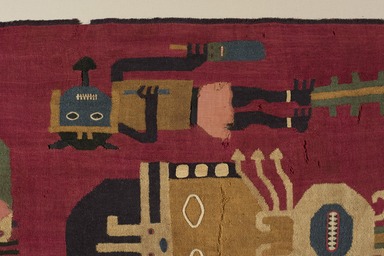
Nasca. Poncho or Tunic, 100–200 C.E. Camelid fiber, 74 7/16 x 27 9/16 in. (189.1 x 70 cm). Brooklyn Museum, Alfred W. Jenkins Fund, 34.1579 (Photo: Brooklyn Museum, 34.1579_dt_detail11_PS11.jpg)

Nasca. Poncho or Tunic, 100–200 C.E. Camelid fiber, 74 7/16 x 27 9/16 in. (189.1 x 70 cm). Brooklyn Museum, Alfred W. Jenkins Fund, 34.1579 (Photo: Brooklyn Museum, 34.1579_dt_detail12_PS11.jpg)
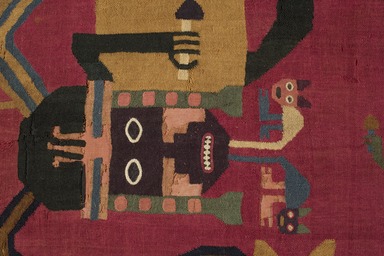
Nasca. Poncho or Tunic, 100–200 C.E. Camelid fiber, 74 7/16 x 27 9/16 in. (189.1 x 70 cm). Brooklyn Museum, Alfred W. Jenkins Fund, 34.1579 (Photo: Brooklyn Museum, 34.1579_dt_detail13_PS11.jpg)

Nasca. Poncho or Tunic, 100–200 C.E. Camelid fiber, 74 7/16 x 27 9/16 in. (189.1 x 70 cm). Brooklyn Museum, Alfred W. Jenkins Fund, 34.1579 (Photo: Brooklyn Museum, 34.1579_back_PS9.jpg)

Nasca. Poncho or Tunic, 100–200 C.E. Camelid fiber, 74 7/16 x 27 9/16 in. (189.1 x 70 cm). Brooklyn Museum, Alfred W. Jenkins Fund, 34.1579 (Photo: Brooklyn Museum, 34.1579_acetate_bw.jpg)
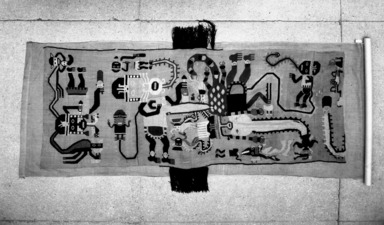
Nasca. Poncho or Tunic, 100–200 C.E. Camelid fiber, 74 7/16 x 27 9/16 in. (189.1 x 70 cm). Brooklyn Museum, Alfred W. Jenkins Fund, 34.1579 (Photo: Brooklyn Museum, 34.1579_view1_acetate_bw.jpg)
Poncho or Tunic
Arts of the Americas
The bold designs on the red background include three large, colorful supernatural beings connected to several smaller figures. The largest figure wears a green and yellow feline pelt and is associated with two mythological animals devouring humans: an anthropomorphic bird and a shark depicted with a human arm. These composite beings combine animals of the natural world with Nasca supernatural deities who keep the world in order.
The panel was converted into a poncho in antiquity, when a head opening was made at the center and long tassels were added at the shoulders.
___________
Este gran panel es el ejemplo más elaborado de la técnica discontinua de urdimbre y trama en la colección del museo. Con esta técnica, las urdimbres y las tramas en el tejido cambian con cada color y en cada jornada de tejido, en lugar de ser continuos a lo largo y ancho de la tela (ver diagrama).
Los audaces diseños sobre el fondo rojo incluyen tres grandes y coloridos seres sobrenaturales conectados con varias figuras más pequeñas. La figura más grande lleva una piel felina amarilla y se asocia con dos animales mitológicos que devoran seres humanos: un pájaro antropomórfico y un tiburón representado con un brazo humano. Estos seres compuestos combinan animales del mundo natural con deidades sobrenaturales que mantienen el mundo en orden.
El panel fue convertido en poncho en la antigüedad, cuando se hizo una apertura para la cabeza en el centro, junto a unas borlas que fueron añadidas en los hombros.



